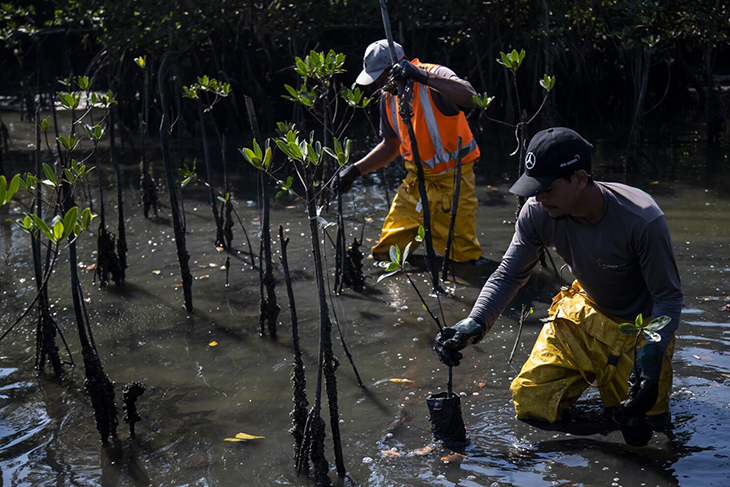
Spanning nearly 150 acres, the Jardim Gramacho landfill located in Rio de Janeiro earned notoriety as one of Latin America’s largest and most infamous waste disposal sites. However, it has undergone a remarkable transformation, now flourishing as a vibrant mangrove forest that pulsates with diverse life forms.
Having been decommissioned over a decade ago, the landfill, which operated from 1970 to 2012, amassed a staggering 80 million metric tons of refuse from Rio’s Gramacho neighborhood along the fringes of the renowned Guanabara Bay. Thanks to a collaborative endeavor orchestrated by the Rio Municipal Cleaning Company in conjunction with private partners, this area has been artfully restored to its natural state, with a specific focus on nurturing mangroves—an ecological gem of paramount importance.
In a strategic progression, 24 acres of mangroves were systematically planted at intervals, gradually unfurling into a sprawling forest that now blankets more than 120 acres. This remarkable expanse stands as the largest contiguous mangrove habitat within the bay area.
The initiative to rejuvenate the bay’s ecology has seen involvement from various quarters. Notably, the nonprofit organization Ocean Pact spearheaded the Green Guanabara Bay Project, which proved instrumental in reclaiming 12.5 hectares, approximately 25 acres, of mangrove wetlands.
The significance of mangroves in the global environmental landscape is profound. In fact, some estimations indicate that a solitary acre of mangrove forest has the capacity to sequester more carbon within its intricate root systems and soil compared to four acres of even the most biodiverse rainforests. This intrinsic ability renders mangroves indispensable elements in international strategies aimed at mitigating climate change.
“Before, we polluted the bay and the rivers. Now, it’s the bay and the rivers that pollute us,” a lead official on the project said when speaking to Africa News. “Today, the mangrove has completely recovered.”
Furthermore, the labyrinthine network of roots that characterizes mangroves serves an exceptional purpose. When confronted with the force of storm surges, these roots act as a resilient defense, absorbing approximately 66% of the kinetic energy of the waves and, remarkably, often withstanding the onslaught without succumbing.
In a final testament to their ecological value, the survival and prosperity of coastal fishing communities hinge upon the existence of mangroves. These ecosystems function as vital nurseries and sanctuaries for a myriad of fish and crustaceans, forming the cornerstone of sustenance for small-scale fishermen who depend on these resources for their livelihoods.
The evolution of the Jardim Gramacho landfill from a symbol of environmental degradation to a thriving testament of ecological restoration stands as a testament to the immense resilience of nature when nurtured by human stewardship and underscores the irreplaceable role of mangroves in fostering both local ecosystems and the broader global environment.
What are your thoughts? Please comment below and share this news!
True Activist / Report a typo


